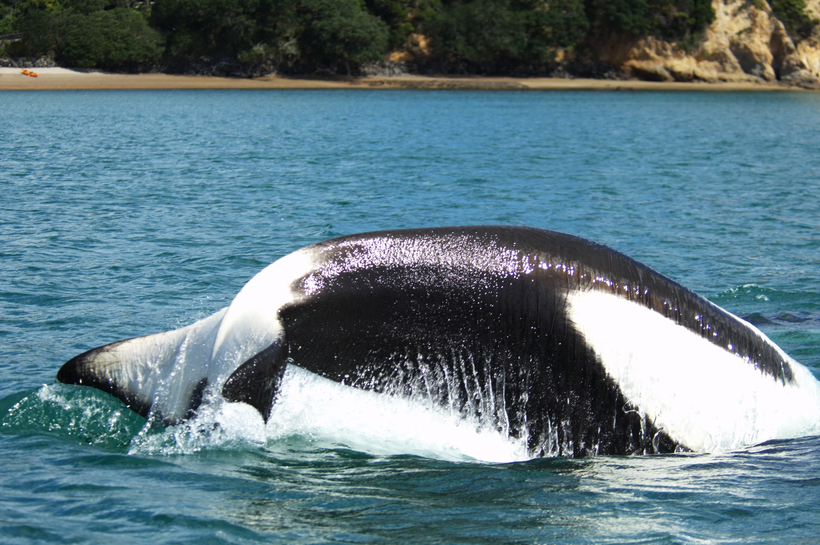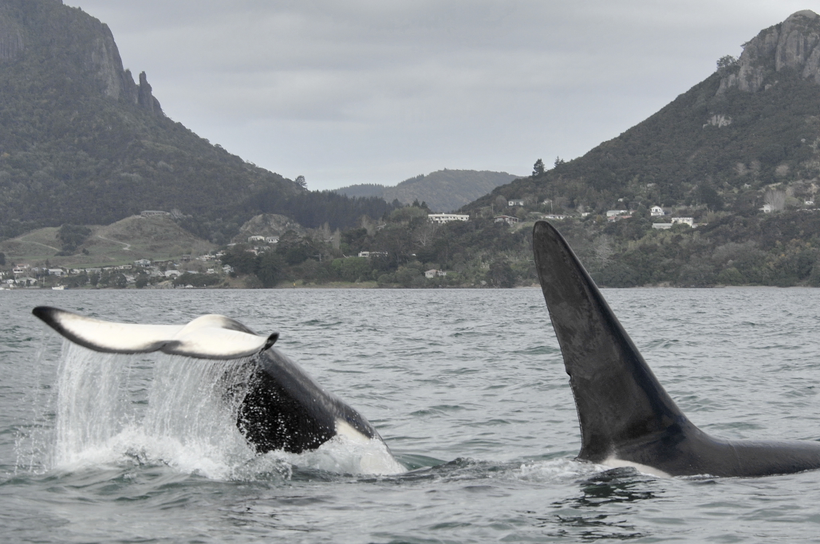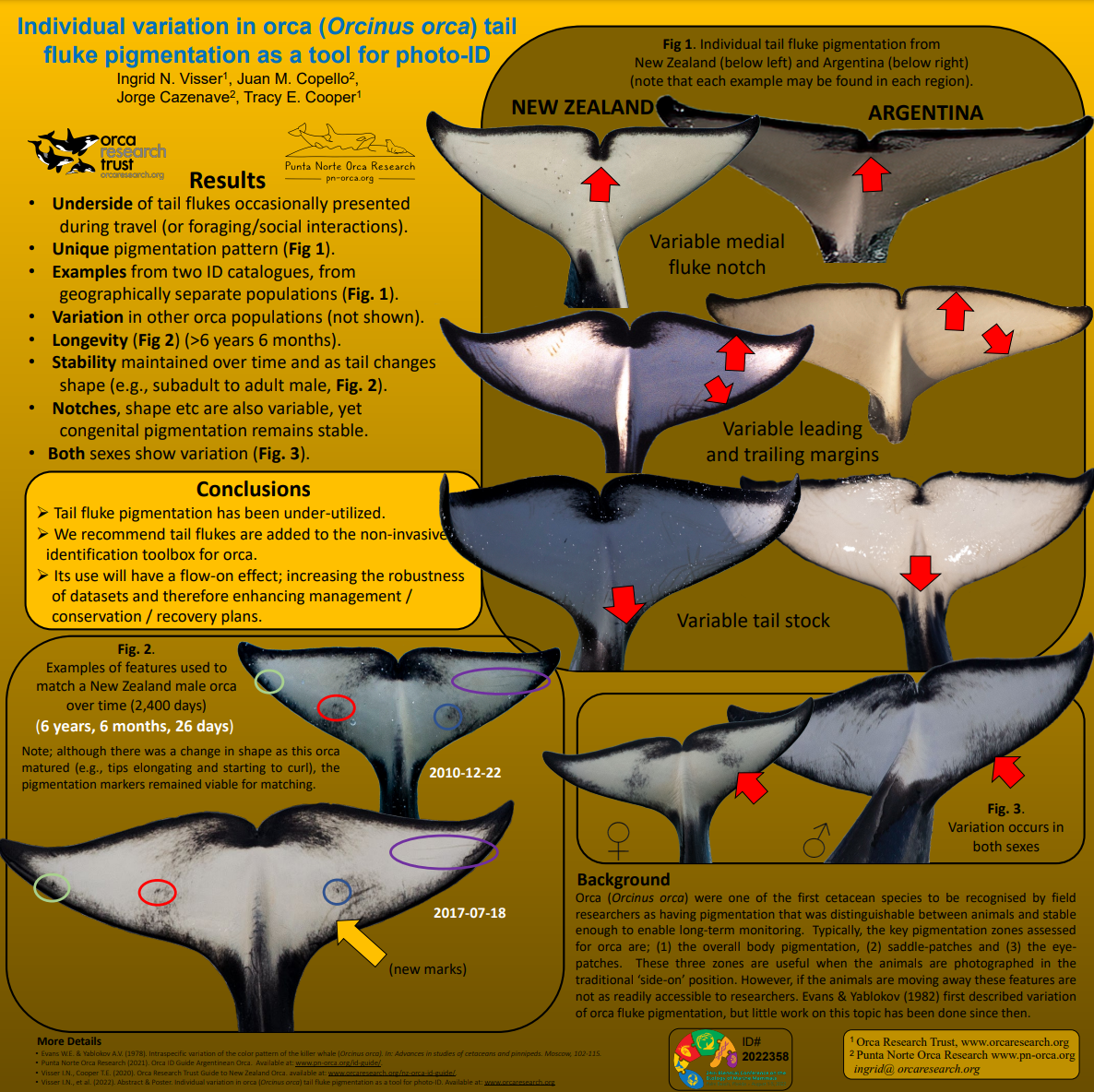
Variation in Tail Fluke Pigmentation (2022 Conference poster)
The Society of Marine Mammalogy scientific conference was held 1-5 August 2022 in Florida, USA. Four members of the PNOR team attended virtually and three co-authored this poster, which can be downloaded as a pdf;
Visser I.N., Copello J.M., Cazenave J. & Cooper T.E. (2022). Individual variation in orca (Orcinus orca) tail fluke pigmentation as a tool for photo-ID (poster ID# 2022358). Presented at the 24th Biennial Conference on the Biology of Marine Mammals; 1-5 August; Palm Beach, Florida.
It is intriguing that after 50 years of research on orca, the pigmentation of tail flukes remains largely overlooked by most field biologists. As far as we are aware, the only researchers using it consistently in their identification of individuals are the Orca Research Trust and Punta Norte Orca Research (Argentina – (you can find out more about their research on www.pn-orca.org).
As part of this research using tail fluke pigmentation, we were able to show that it remains stable over time and even as the individuals’ tail flukes change in shape (male orca’s tail flukes, like their dorsal fins, change as they reach sexual maturity and as they age, becoming more curled at the tips the older he is).

Variation in Tail Fluke Pigmentation (2022 Conference poster)

Using the data collected by Dr Visser, a photo-identification match of a male orca over a period of 6 years, 6 months and 26 days.
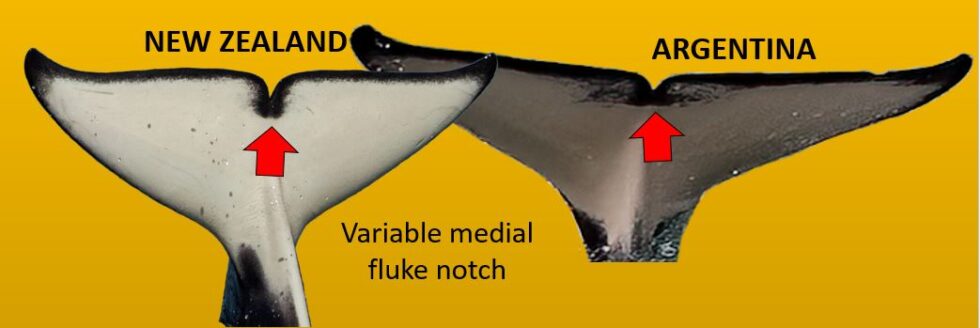
Part of Figure 1 from the scientific conference poster illustrating the variation in the pigmentation around the medial notch. But note that both types of pigmentation can be found in both populations (see the example below, from a New Zealand orca)

The margins of tail flukes also show variation.
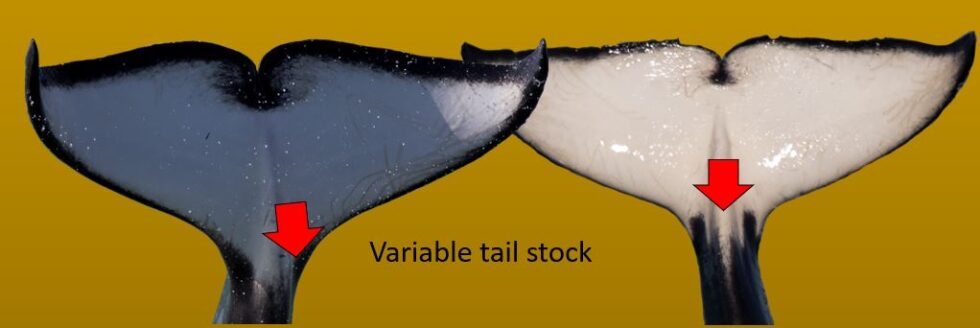
The pigmentation at the base of the tail stock also varies between individuals.
